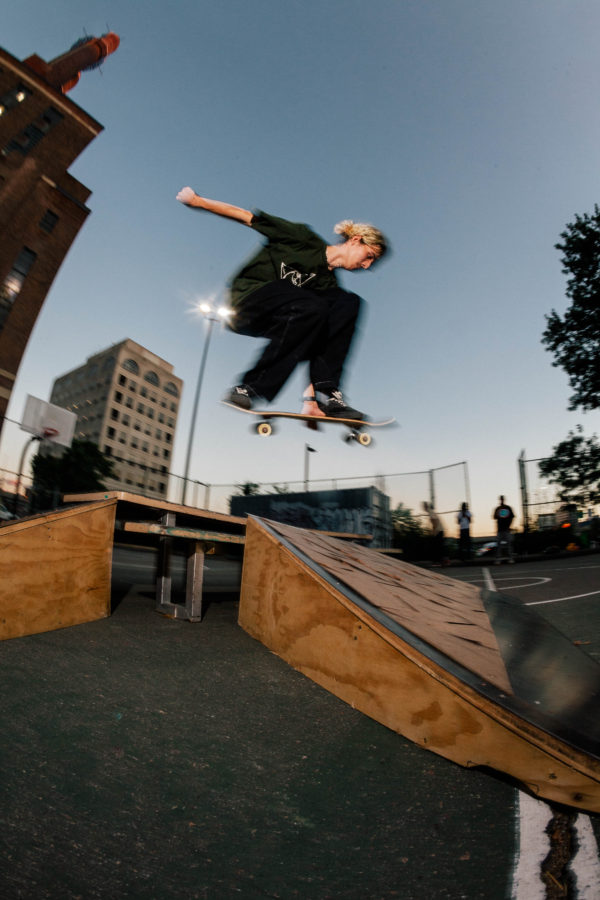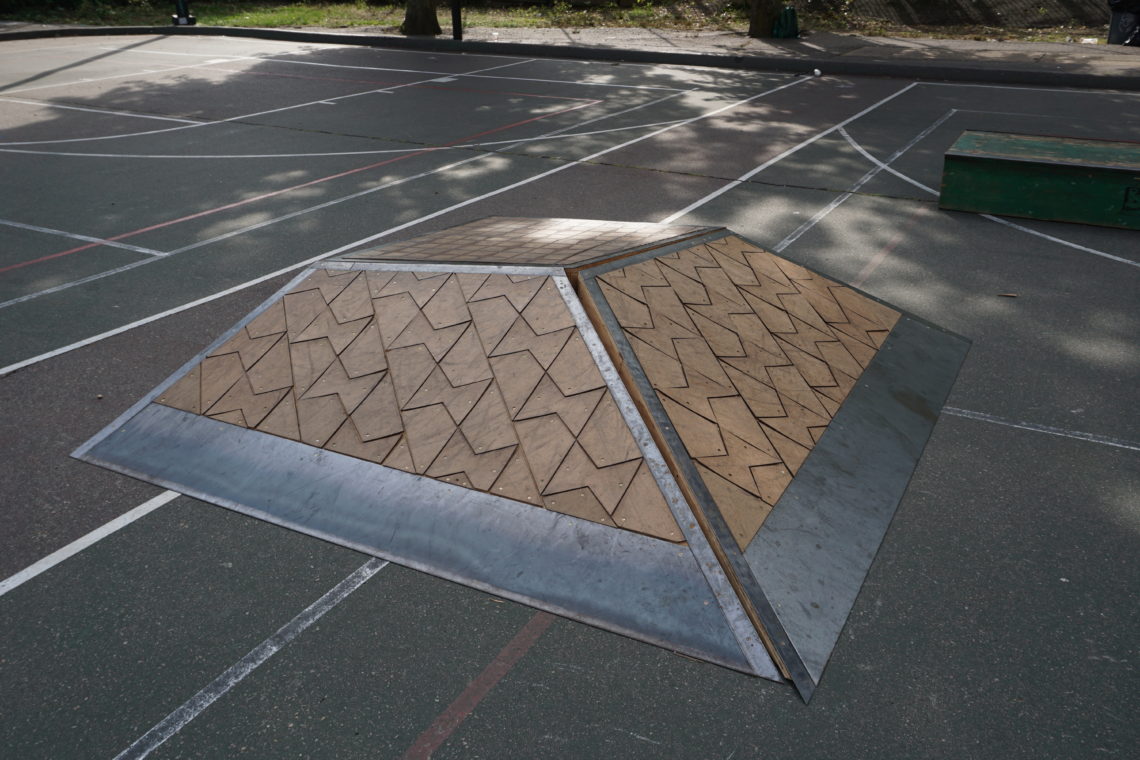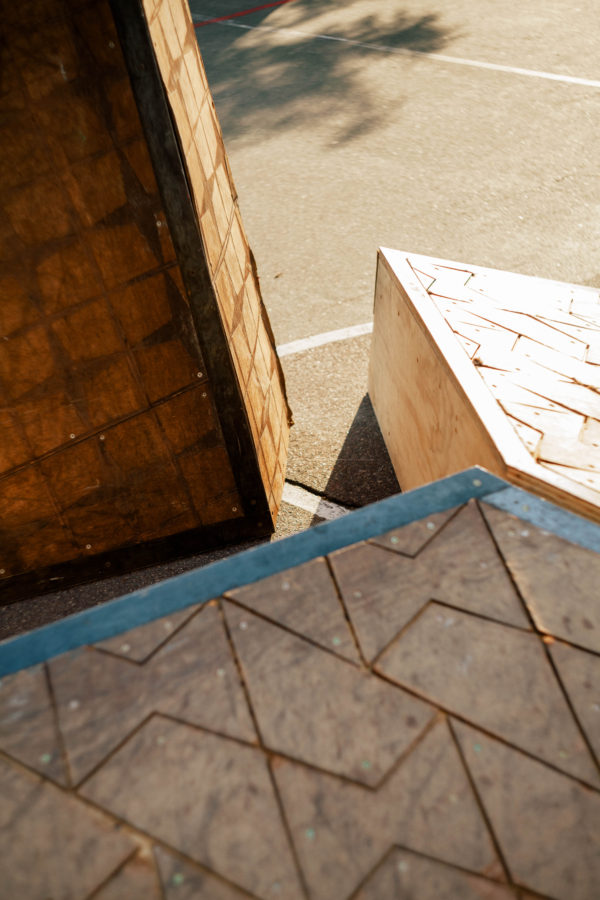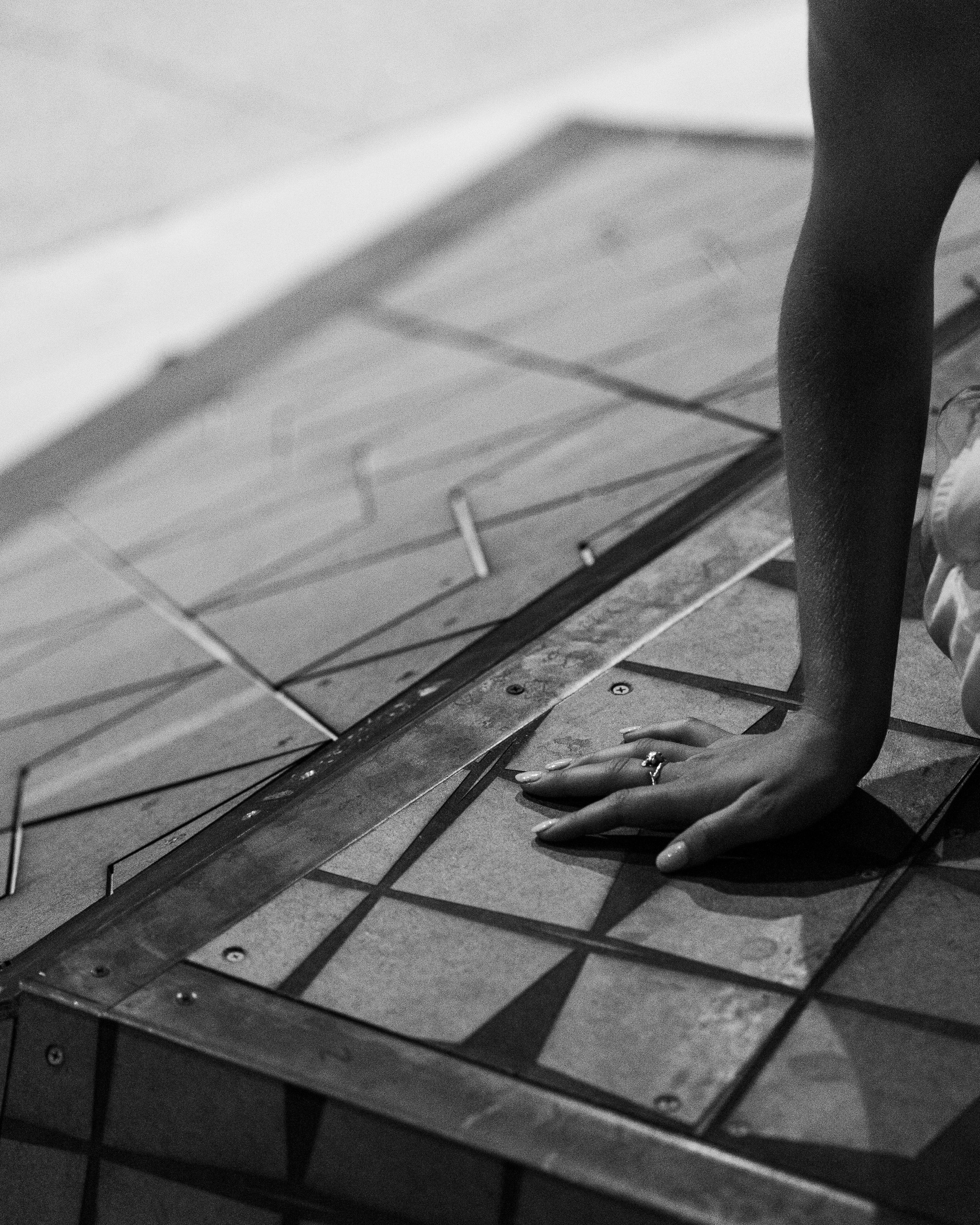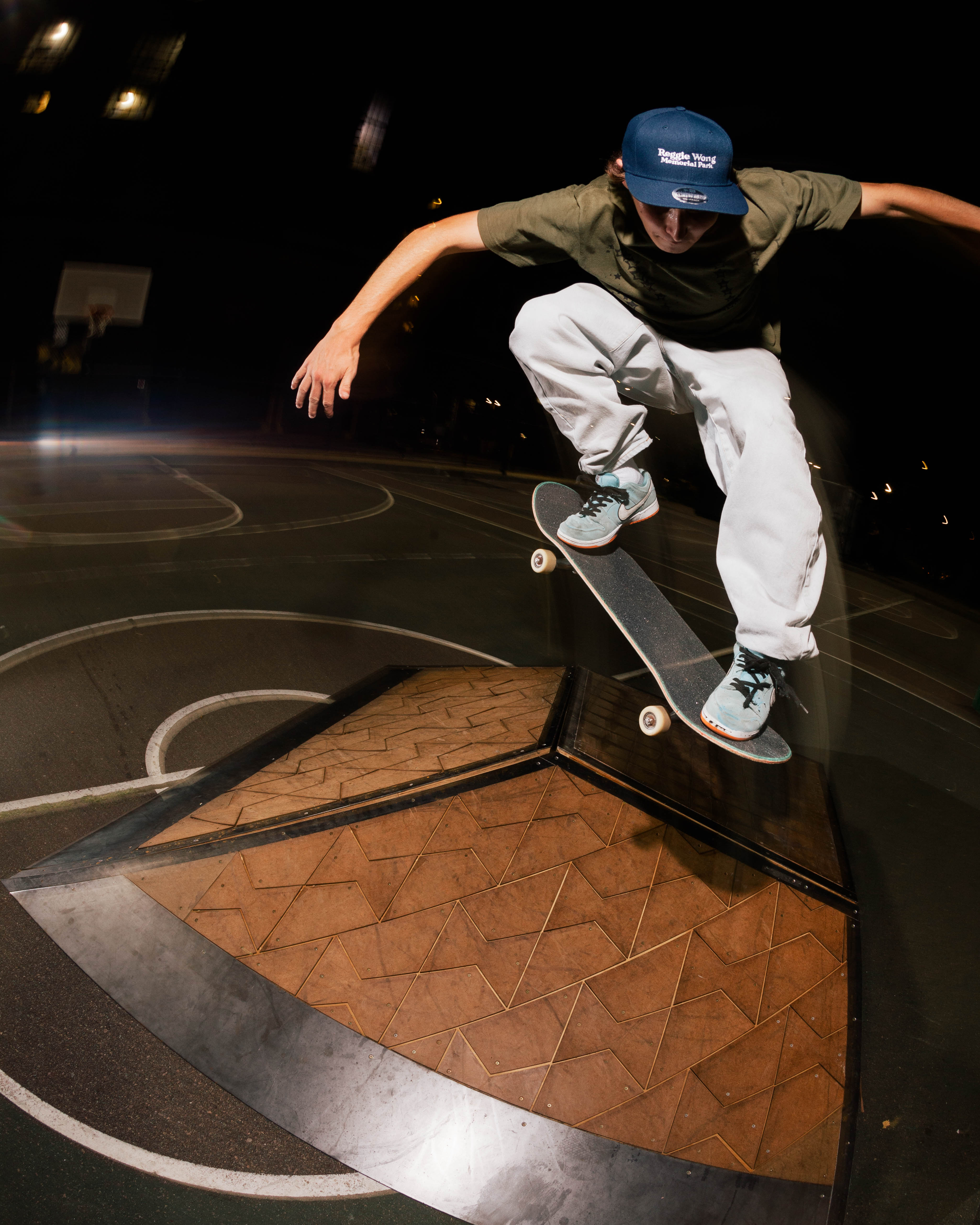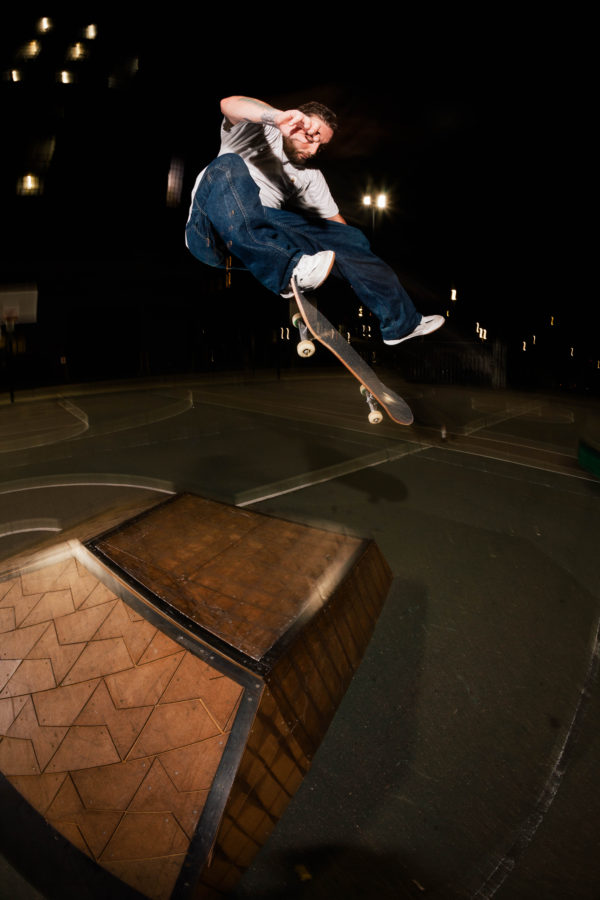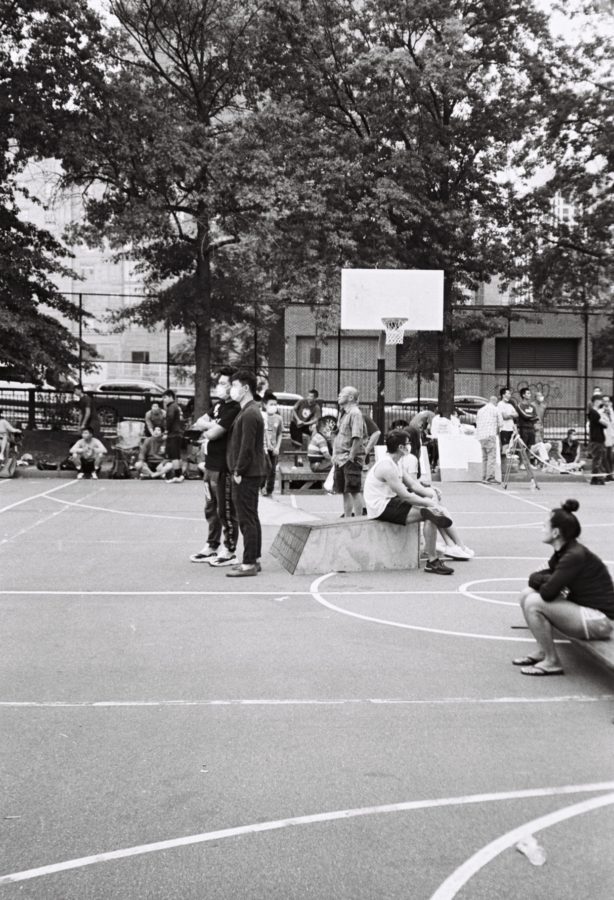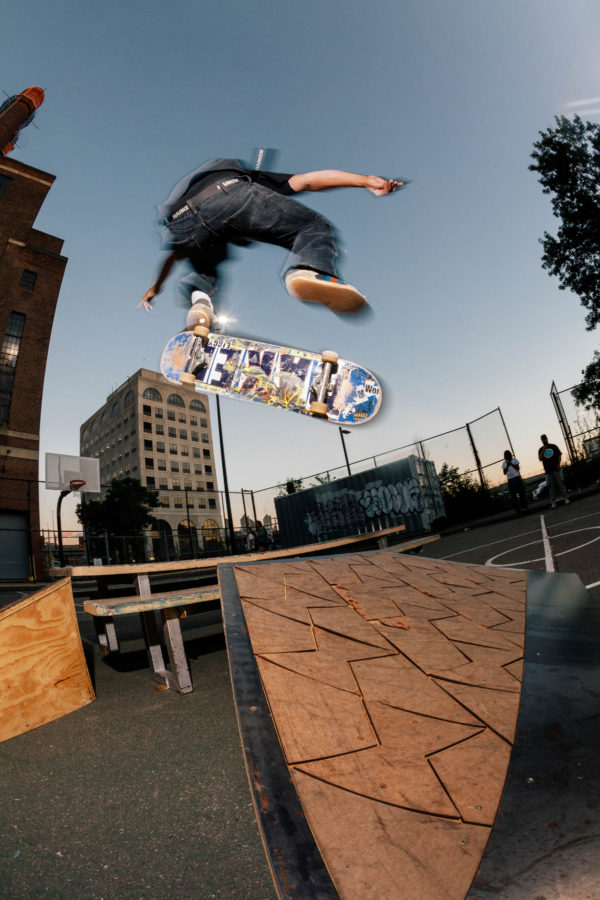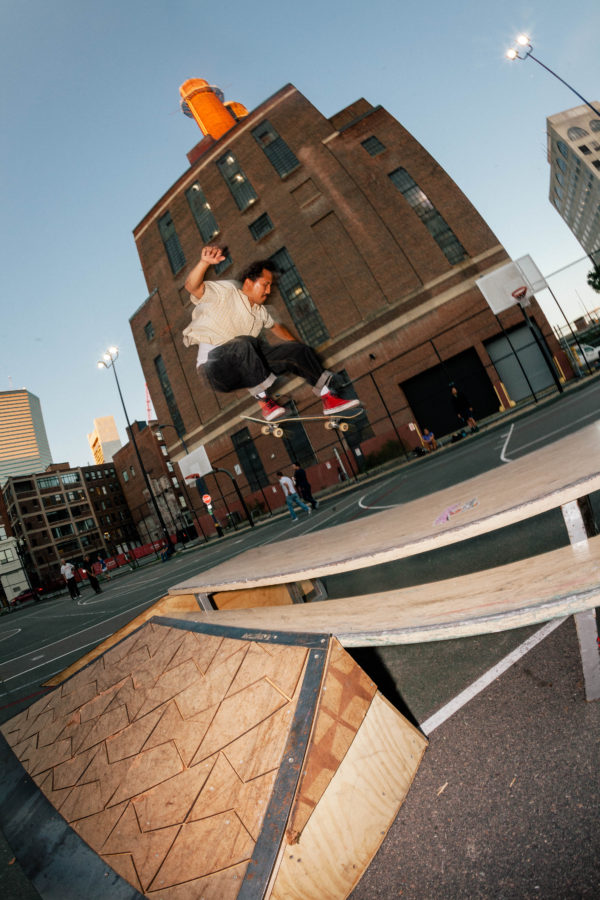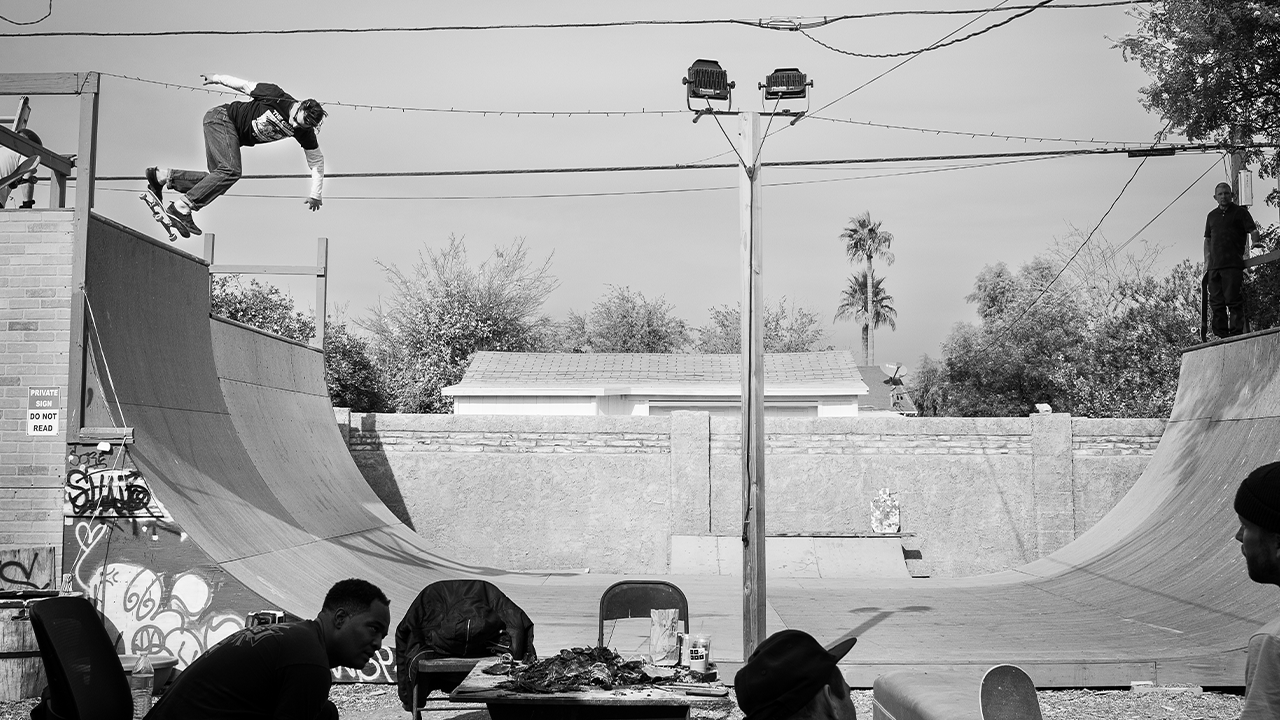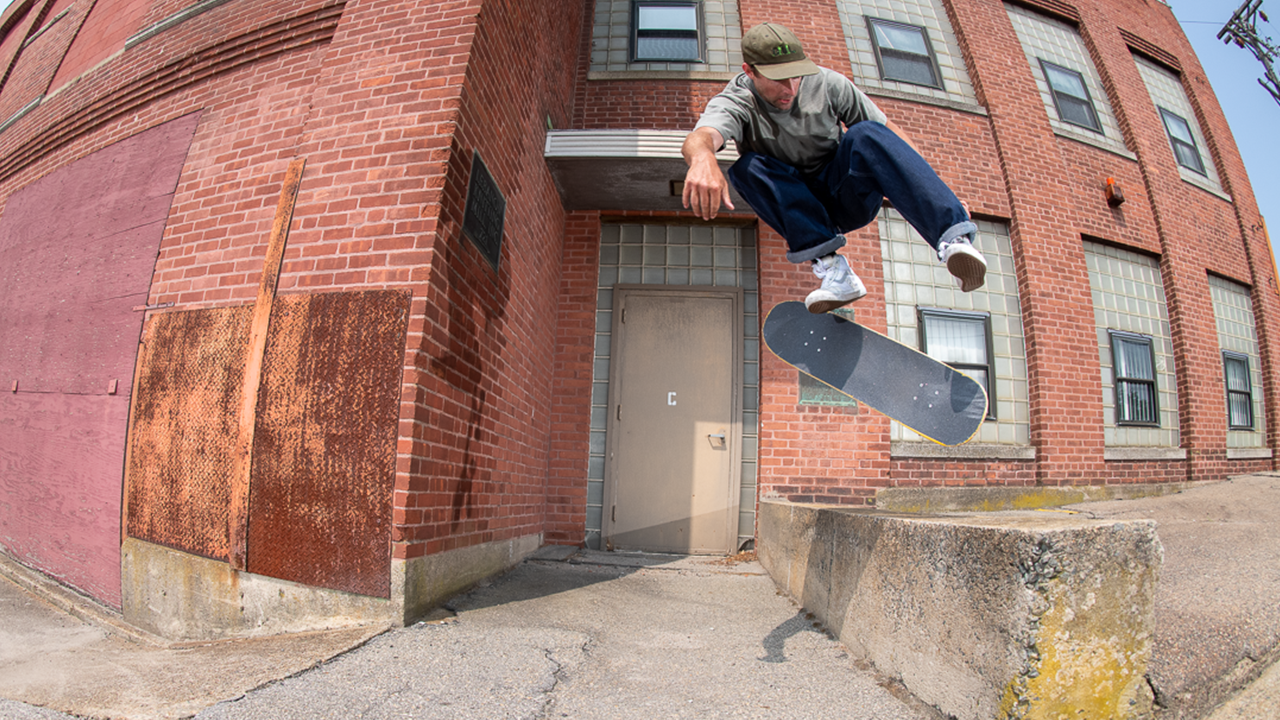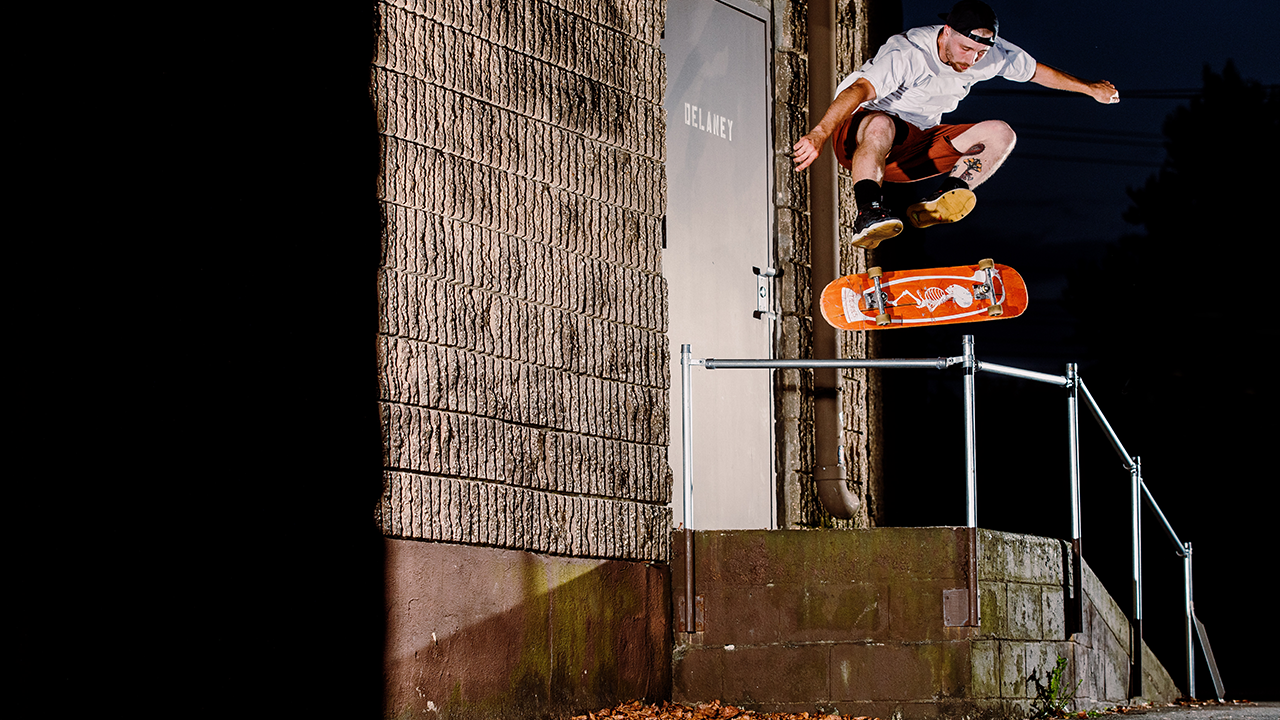Interview and introduction by Zach Moeller.
Photos by Matthew Maydoney.
Leif Hauge has always emphasized putting skateboarding first. Having recently graduated from Wentworth School of Design in Boston, Leif upheld that dedication with his senior thesis, which he concluded by building a skatable sculpture entitled “Tempos.” One of his goals with the project is to provide a unique obstacle for skaters of all skill levels to enjoy. More importantly, however, he hopes this project will inspire a conversation within his city to expand skateboarding into public areas in an effort to combat modern (often wrong) perceptions of skateboarders in the streets. Recognizing that skaters are students of texture, and more importantly individuals who wish to express their creativity in shared public spaces, Leif laid out his motives for starting the project as well as his aspirations for the future of it.
Where are we and what did we just finish doing?
We are at Chinatown Courts in Boston, Massachusetts. We just got done skating a sculpture titled “Tempos,” designed by myself. We arranged it in its original position and had a good session.
Talk to me about the design of Tempos.
The design of this sculpture, this obstacle, I wanted to be familiar to skateboarders. It’s similar to a pyramid, kind of skewed in its shape where there’s no parallel or flat faces. Right off the bat I wanted it to feel like you could skate it and immediately recognize as a skateboarder, “oh this is interesting.”
The second part of it is the texture which you can see. To speak on the texture, I wanted it to be different in the sense of it’s not just your form but also how you ride it and how it feels when you do. It’s also inclusive in terms of ability. What I mean by that is that you don’t have to do a big trick on it, you can literally just roll over this thing and feel the texture. A top down view of this sculpture will show you the shapes and create the patterns that you can see along the surfaces.
The last thing is the modularity of it. It’s split into three bodies which allows for the possibility of rearranging it differently and further extending this idea of giving creative expression to skateboarders.
What inspired a concept like this?
A lot of the thinking behind this piece is derived from considering the current solutions to skateboarding in cities, which is essentially just building skateparks. How can you further push and integrate what we’re really rooted in, which is the streets? What is a solution to incorporating skateboarding back into the streets? Being this kind of nomad for the past six years and actually coming from cities like San Francisco, where I’ve experienced how somewhere like EMB feels compared to the Island, versus how bombing down asphalt feels, it made me realize we’re super-hyper aware of texture. That’s the inspiration behind the texture. I love going to an indoor park and there’s little x’s on the coping and you can feel it, it’s called diamond grind. I love how in Virginia, or even here in Boston, there’s this colonial brick that’s perfectly flush so it doesn’t slow you down but you get to feel every single crack and groove. It even sounds awesome on film. While filming skateboarding, you’re visually drawn to spots with these repeated patterns. That’s where my inspiration comes from, like how can I mimic that while also making it unique? Also, there is the inclusive aspect in terms of ability. If you go to a skatepark to learn how to skate you are going to feel smooth concrete, essentially nothing with this absence of texture. But here’s this opportunity to experience what the streets can feel like and offer. That’s the real inspiration. How can I make that connection to a beginner and how can I bring what I find satisfying as a street skateboarder into a sculpture piece.
What can you tell me about your senior thesis?
I went to school at Wentworth School of Technology. It’s primarily an engineering school but they have an industrial design program. It’s essentially product design in the most traditional sense. The thinking of it allows you to build it into architecture and systems designs. It’s a problem solving mindset just expanded a little more. I took my senior thesis as an opportunity to be like, “What can I actually do with skateboarding aside from things like designing footwear or hardgoods?” What sort of problems do I face as a skateboarder and what seems most important to me. The future of skateboarding should be in the streets, continuing what we’re rooted in. Having good memories out and about and exploring things that aren’t exactly meant to be explored that way. That’s where the industrial design thinking helped the most. I found a demographic, skateboarders, and I found a problem that we all deal with, a negative perception of who we are. I am an educated person yet I’m still perceived as a criminal, which is annoying, but it’s all due to my pursuit of creative expression through skating. My design background has made me consider that there is a proper solution to combating that perception.
So you’re trying to bridge the gap between that generalized public perception of us and who we as skateboarders truly are?
Yes, for sure. I think that this project is a stepping stone to inspire others to create similar projects and solutions, and to inspire conversations with cities to happen. To be like, “Hey, how can we better incorporate skating into this city besides just building a skatepark?”
How did you present this to your professors and school faculty, people who don’t understand skateboarding, in a way that accurately communicated your goal? Do you think they understood what you were trying to explain and do you think others with no knowledge of skateboarding will also understand?
My initial pitches were framed in a way where I just introduced photos of me being arrested, screenshots of me being strangled by a security guard. I showed them the problem of physical conflict and altercations rooted in that negative perception of skaters and demonstrated how I had full experience with it. I didn’t talk about how other people experience this, I planted the seed by showing them me going through it. That’s a huge thing that many designers don’t have at their disposal. Most design students research the fuck out of the people they’re trying to solve this problem for, but have no connection or personal experience with it. So that’s how I showed them how it’s valuable and connected to them. They immediately grabbed on to that and said that they understood. They jumped into my shoes and considered that this may be a good solution, that he can speak for many more people than just himself because there is a huge community of skateboarders. My goal with my pitches was to bridge the gap for non-skateboarders to understand that street skateboarding is our culture, not skateparks or cruising on a longboard.
Skatable sculptures and obstacles have been implemented in public spaces in cities like Bordeaux or Malmö. Do you hope to eventually be able to follow suit here in Boston with more permanent installations, and how do you hope to get the city on board?
Yes, I hope to follow the infrastructure they have built in cities like those as far as their architecture is concerned. They seem much more progressive and willing to try it out. It’s not a guarantee that skateboarding will win in the end, but it is a guarantee that people will see other folks’ ways of living in public spaces. From the projects like this and the people who I’ve talked to that have been involved in them, it seems to go very well. Designing spaces like this in public areas has reduced conflict and has increased openness to skateboarding. As far as how to get that conversation started with the city here, I hope projects like this can help introduce this concept of inclusiveness. Maybe it starts with only building wooden obstacles and placing them in areas already friendly towards skateboarding. That’s what I did with Tempos. It’s been interesting to see it in a space that’s also used by basketball players and volleyball players, where it’s being used as seating or kids are running around and playing on it. It’s honestly the most ideal test. The fact that it’s worked means that if I get the opportunity to speak with the city about furthering this, I can say “this has been here for a while and the public is reacting to it just fine. Good things come from it and it’s actually more positive than anything. So why not expand on it in other areas?”
What is the next step in advancing this vision into further projects?
Well, keeping a good record of what’s been done and starting conversations with people who have a similar open mindset. I don’t think this can be accomplished by just me, not anything big can. It has to be in collaboration with people. So if that’s possible that’s what I’m going to try to pursue. It’s one step at a time. I’m only one guy that’s begging his friends for help whenever they can, whether it’s moving the obstacles around, capturing my creation process, or even just skating it with me. I do it because I believe it benefits the skateboarding community here in Boston.
Do you think getting brands involved could help?
Brand involvement is a great question because it depends what the brand has in mind. As a designer and artist I’m pretty open to what that can look like. What can be agreed upon is that if a brand is interested, there has to be a conversation with the city. No corporation is big enough that a city will simply bow down to it. People still need to be convinced that it’s a good project. I think brand involvement could be the easiest and most doable solution to where we can get funded to build something unique while creating video assets and photo assets. Brands could also use this as an asset for creative direction, maybe using the piece as a stage for shooting a marketing campaign, for example, and have even bigger product stories. That’s ideal, and super possible. Brand involvement would be where this could actually take wind. Nobody will really care about this post-grad college kid who keeps making small wooden obstacles. I think something bigger to speed this up would have to happen.
What parallels can be drawn between design and skateboarding?
Design and skating are very similar. The mindset of a skateboarder is your willingness to fail until you succeed. That is something I learned very early on as a skater and I took that to design school and watched my peers struggle to learn that skill set. It’s a huge stepping stone in making progress in design. It’s a willingness to fail mindset and that’s where the connection and the path to success is. It’s also about seeing something that’s not intended to be used for something and seeing other uses for it. I think a lot of skateboarders are inherently designers. You’re constantly searching for skate spots and wondering, “how can I make this work?” There’s your problem, and an attempted solution. You can try for hours, go back and fail, and then reflect on it. That’s the last thing. Design is all about feedback and so is skateboarding. It’s all about reflecting on how you did, what could be done differently, and what makes it stand apart.
Would you like to thank anyone who has helped you out with this project?
All of my professors. Derek Casio, he’s a huge help who has motivated me and done a lot. Armin at Orchard and Jason at Cardinal, all the people who have supported the vision and helped me. Also every single person who has donated money to me for help. I am so against Gofundmes but I raised all of the money I needed within 24 hours. Skateboarding is awesome in that sense.


